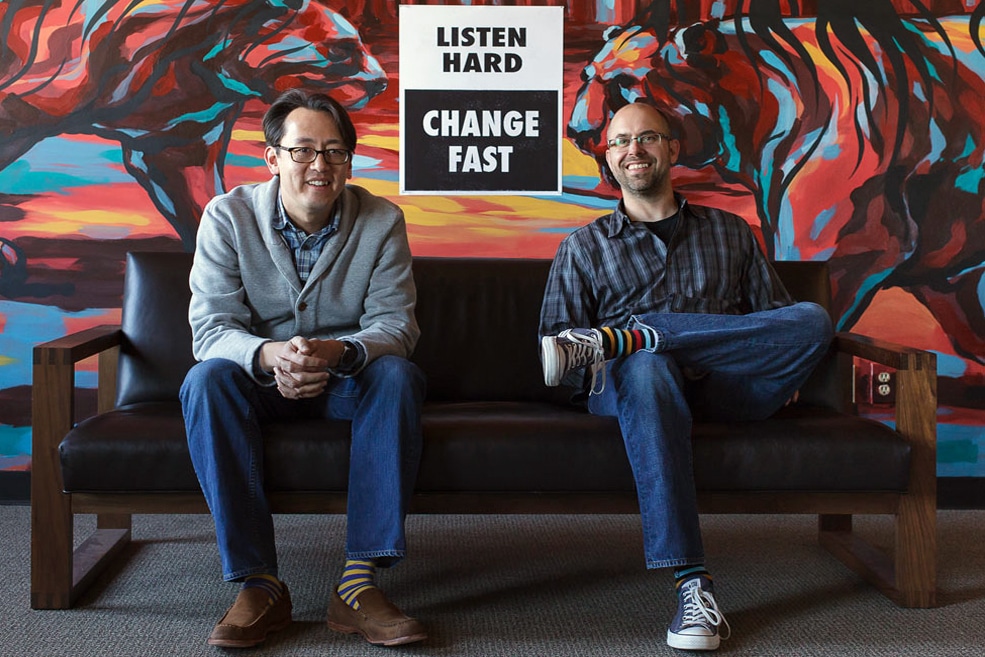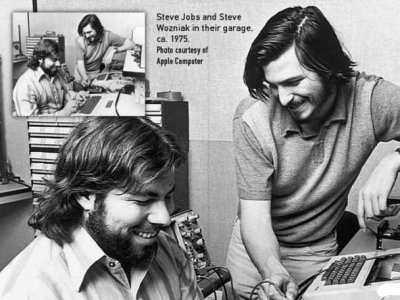On the immensely popular HBO show Silicon Valley, there’s a scene in the first season that is a very poignant statement on VCs.
In this show, the protagonist, Richard, meets an old college friend whose company’s over-evaluation and the tight deadlines provided by his Venture Capital (VC) led to its decline.
Richard wonders aloud why he would have taken such a high-risk proposition, causing his poor friend to lose his mind when he realises that he could have dictated his company’s growth to a higher degree.
It was watching that scene where the allure of bootstrapping, not seeking out VC money and focusing on merely building one’s platform, inspired this article.
After all, for the amount of money flowing into startups, there are more strings attached to it than most inexperienced startups know what to do with.
And so they often take the money only to discover how hard it is to manage expectations and performance from quarter to quarter as growth is expected and deadlines are to be met.
And for all the investments going on, many startups have succeeded in unimaginable ways through focusing on a low-cost product, most often in the form of digital service and by providing a quality of user experience that is unmatched by their VC-funded peers.
As Robert J. Lahm and Harold T. Little succinctly write in their seminal research article Bootstrapping Business Start-ups:
Bootstrapping is entrepreneurship in its purest form. It is the transformation of human capital into financial capital.
To gain a more detailed understanding of bootstrapping for this article, it would also be wise to look at Joakim Winborg and Hans Landström’s definition of bootstrapping finance:
Financial bootstrapping refers to the use of methods for meeting the need for resources without relying on long-term external finance from debt holders and/or new owners.
Of course, as rosy of a picture that the below examples paint, according to SmallBizTrends bootstrapped companies have a 50/50 chance of succeeding during a five-year period.
But then again, funded startups do not stand much better odds, and many business experts recommend bootstrapping startups, especially if you don’t want to deal with a boardroom full of shareholders telling you how to run things.
Then there’s the school of thought that argues that 99% of startups are in fact either bootstrapped, funded by the entrepreneurs themselves or given funding by friends as family, all of which apply to the below examples.
Below we look at case studies of ten highly successful companies that bootstrapped and why bootstrapping was fundamental in setting each company on a remarkable trajectory.
1. Facebook’s example of bootstrapping

When Harvard dropout Mark Zuckerberg wrote the Facemash program during his second year at the university, few could have expected that he was laying the groundwork for the future of social media.
When Facebook took off in 2004, spreading across college campuses like wildfire, it was clear that Zuckerberg had created something whose potential for growth seemed unlimited. The company finally received its first significant investment from PayPal co-founder Peter Thiel later that year.
But for college students who first got a chance to play with this earliest iteration of Facebook, it was clear from the second they created their profiles that this social network would not go the way of Friendster or Hi5.
Most notable though is how Zuckerberg created all of this with the help of several other students – who later sued him for approximately $300 million in shares – and how Facebook grew through both actual and digital word of mouth.
Simply put, it was the first social network to truly gain such traction and give its audience exactly what they wanted, something Facebook continues to do at the time of writing through its constant expansion of features that include live streaming video and messaging.
What Zuckerberg’s case shows is that the quality of an idea and a team willing to help one realise it could change the world, all without the need for significant funding to get started.
2. Dell’s example of bootstrapping

One thing that separates the bootstrapping example of Facebook from Dell’s and many of the other companies is that while Zuckerberg had the luxury of having a personal computer on which to programme Facebook, companies like Dell had considerably greater overhead in their desire to design and ultimately manufacture PCs.
So while the $1,000 in expansion-capital Michael Dell received from his family to drop out of college at University of Texas at Austin where he had already founded PC’s Limited might seem like a hyperbole form of bootstrapping, let’s save the hairsplitting and consider how that small family loan was soon turned into $30 million in four short years.
Dell’s “human capital” came in the form of his visionary understanding of the computing process that he gleaned in part from his dorm-room enterprise selling IBM PC-compatible computers made from stock parts.
What Dell showed was that he was able to look both at the past successes of other people on this list like Bill Gates and Steve Jobs and realise that there was still a section of the market open to him.
And by turning to his family who certainly did not have nearly close to the number of strings attached with VCs, Dell allowed himself to grow truly independent as Dell became a major player in the computing market in the late 1990s and 2000s.
3. Apple’s example of bootstrapping
Is there a bootstrap story perhaps as celebrated as that of Steve Jobs, Steve Wozniak, and their famous home-brewed operation?
Having dropped out of Reed College and UC Berkley, respectively – are we beginning to notice a pattern here? The two founders of Apple Computers met at a meeting of the Homebrew Computer Club, a local computer hobbyist group in Silicon Valley.
The duo soon set off on raising their own capital by making blue boxes that allowed people to make long-distance phone calls for free illegally.
After selling several hundred boxes, they next built their personal computer with Wozniak assembling the device and Jobs taking it to a local store to sell it.
Soon, they had an offer to manufacture 50 computers, but of course, there was not nearly enough capital for a high-cost order like that.
After Jobs pulled an incredibly bold stunt with a local credit manager, he secured the funds to build the computers.
Along with the help of Wozniak and a small skeleton crew of workers, Jobs and his team worked day and night to deliver the computers on time, and by 1976, with the help of Mike Markkula, the three took out the bank loan need to form Apple Computers.
From there, Jobs carved out a legend for himself as a business pioneer who followed his instincts. Still, it’s clear from the start that his bootstrapping approach to starting Apple stemmed from a belief in the capabilities of human capital and bootstrapping.
4. HP’s example of bootstrapping

Perhaps it was the times, but it’s remarkable how much of early computing history took place in garages, not to mention the number of bootstrappers included in this article.
Back in 1935, William Redington Hewlett and David Packard graduated from Stanford University with electrical engineering degrees while the Great Depression offered a little opportunity in sight for two bright young engineers.
So instead of standing in bread lines, they set about starting their own company with the help of a former professor of theirs at Stanford, Frederick Terman. First originating in their garage in Palo Alto following an initial $538 investment, a series of pioneering computer inventions led them to incorporate in 1947 and file for an IPO only a decade later.
As Hewlett and Packard’s case shows, youthful ambition, even when it’s set against the greatest economic disaster in American history up to that point, paired with real talent, is a crucial ingredient in bootstrapping success.
Although there wasn’t a demand for technological processors and devices, at least not a pronounced one, Hewlett-Packard demonstrated that where there’s no perceivable market, it is still for companies with one-of-a-kind products to thrive.
5. Microsoft’s example of bootstrapping

While it may seem unfathomable that the biggest computer company in the world would have started with bootstrapping finance, Bill Gates was a tenacious bootstrapper.
Starting Microsoft a year earlier than Apple in 1975 with his partner Paul Allen, Gates and Allen had begun back in 1972 with the creation of their first company called Traf-O-Data, which tracked and analysed traffic data from vehicles.
Their big breakthrough came in the form of a 1975 Popular Electronics feature on the Altair 8800 microcomputer. Allen believed that the two of them could develop a BASIC interpreter for the computer, despite not having a working model.
Instead, Allen developed an Altair simulator and Gates programmed an interpreter that ended up performing perfectly during the demonstration. Soon after, Microsoft was born, and history was made.
What Gates and Allen demonstrated is that the bootstrapping approach requires an immense amount of work for no guaranteed pay-off.
6. TechCrunch’s example of bootstrapping

Another essential aspect behind many of the bootstrapping success stories here is the fact that many of the entrepreneurs had an impeccable sense of timing.
This trait was undoubtedly true of serial entrepreneur Mike Arrington, who enlisted the help of Keith Teare to attempt and translate his past successes to the blogosphere.
In seemingly no time, TechCrunch was filling a hitherto under-served need: tech gossip and business news.
What made TechCrunch truly stand out, however, was their impeccable commitment to quality journalism, something that is often lacking from many blog-born news sites.
They took Silicon Valley as their beat, yet startups and established companies were also covered.
Not only did Arrington and Teare strike when the iron was hot, but they also managed to demonstrate another aspect of a bootstrapped business: being an authority.
If you don’t have a lot of capital, information and knowledge can fill that place and give you an edge your competitors might not be able to surmount.
7. GitHub’s example of bootstrapping

It must have been tough to be Tom Preston-Warner’s family the day he turned down $300,000 from Microsoft so he could focus his energy on the web-based hosting service that people use for software development using the Git revision control system.
Starting as a weekend project with the founders donating their own time and the only money spent was to buy their domain, once they decided to make GitHub a full-time concern, they all invested in funding the setup costs.
After all, as many of the above cases prove as does GitHub is the fact that when a group of people get together to focus their energy on a project they all believe in, tremendous sacrifices get made on the strength of their faith.
And indeed, GitHub, which developed into a social network combined with a co-working platform slash portfolio site seemed like it was birthed from the collective unconscious as it met a need few knew about outside the development community.
Knowing niche markets and their intricacies is another important takeaway from the GitHub case as these developers stepped back and saw a need greater than their own work and pursued it to absolute success.
8. MailChimp’s example of bootstrapping

MailChimp’s story is an especially interesting one since most people believe the company started in 2008 when actually, they entered stage 3 of their company’s growth and development in 2008.
MailChimp was founded in 2001 by web developers Dan Kurzius, Ben Chestnut, and Mark Armstrong who for years worked on their API and platform as an eMail newsletter company.
For their first eight years, they employed a subscription model that required payment to use their enterprise-level technology.
However, in 2009 they threw a curve-ball by switching to a freemium marketing model in which anyone could access the entry-level service provided by MailChimp, but would have to pay for greater reach and improved features.
A year later, they issued a letter that addressed their bootstrapping history in explaining their switch to Freemium, emphasising the quality of their technology that got them to the point where the cloud made offering their service far less expensive.
MailChimp proved that investing the time in producing a high-quality product and service – even if it is in your own time – is a great bootstrapping technique that could pay high dividends in the long-term.
9. eBay’s example of bootstrapping

As with most of the businesses listed on this page, eBay started at home too. Though in this case, it wasn’t a garage, but a fateful living room that would transport Pierre Omidyar to the forefront of both the first internet bubble and well past it to its place in the canon of established internet businesses at the time of writing.
Omidyar could be considered a pioneer of online business with the creation of AuctionWeb, “dedicated to bringing together buyers and sellers in an honest and open marketplace,” as read in its initial mission statement.
Over the following years, Omidyar grew his business in alignment with the growth in internet usage and demand for such services.
By June 1996, $7.2 million worth of goods had been sold on AuctionWeb, but that number would pale in comparison to the $500 million in Beanie Babies that would be sold on the site during the Beanie Baby mania of the late 90s and which still extends to this day.
What eBay managed to do was create a sustainable revenue model that could grow continuously for years.
At the time of writing, eBay is considered the top online auction site in the world and provides an outlet for online shoppers and sellers everywhere to get things for cheap or make a full-time living.
10. Oracle’s example of bootstrapping

Finally, in the case of Oracle, we once again have an instance of a perceptive young entrepreneur catching sight of an opportunity overlooked by his peers.
A leader for over 35 years in database software, it all began when founder Larry Ellison discovered while reading an issue of The IBM Journal of Research describing a relational database’s working prototype.
After showing it to colleagues and professionals in the field, Ellison along with Ampex co-workers Bob Mines and Ed Oates discovered that no company had yet to commit these plans to reality.
Sensing a massive potential in their relational database, they soon began work on the Oracle Database, which also provided the name for their newly-born company.
What these three achieved through no initial outside investment was nothing short of a revolution in corporate computing.
While databases were long assumed to be massive, the trio developed a technology that maximised the use of space while losing none of the data.
Simply put, they were able to see the big picture when no one else seemed to. But more importantly, while others could have seen that paper, they were the ones that acted on it. If there’s any lesson to be taken from the above bootstrapping examples, it is that taking that leap of faith in a market well-researched and known by the entrepreneur could lead to failure, or be the bravest and smartest act of all.
It has been a pleasure to provide you with this list of top tech companies and entrepreneurs that started by bootstrapping. If you enjoyed this article, share and comment, please.





